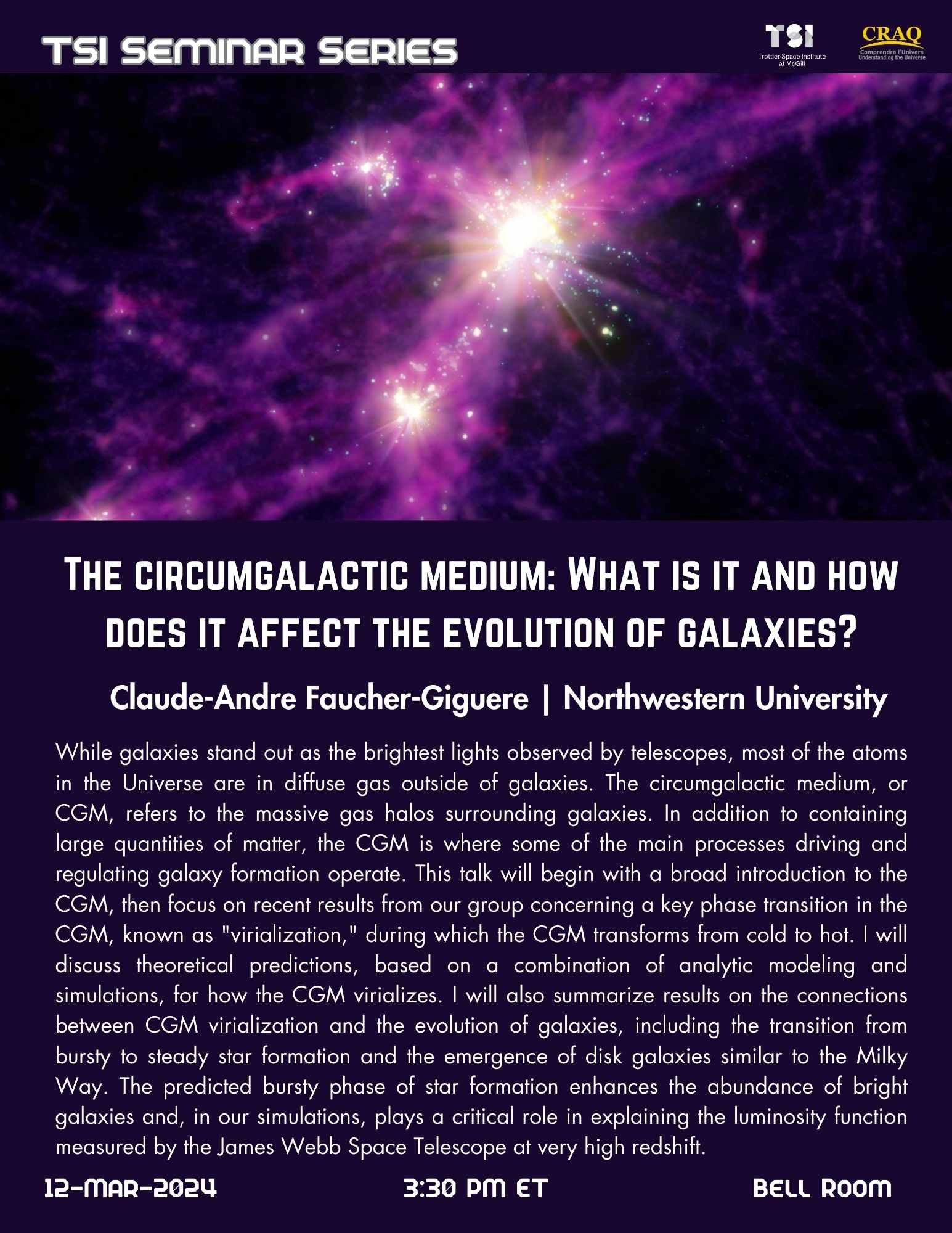The Circumgalactic Medium: What Is It and How Does It Affect the Evolution of Galaxies?
Claude-Andre Faucher-Giguere
(Northwestern University)
Mar 12, 2024 3:30 PM
TSI Seminar
Title: The circumgalactic medium: What is it and how does it affect the evolution of galaxies?
Abstract:
While galaxies stand out as the brightest lights observed by telescopes, most of the atoms in the Universe are in diffuse gas outside of galaxies. The circumgalactic medium, or CGM, refers to the massive gas halos surrounding galaxies. In addition to containing large quantities of matter, the CGM is where some of the main processes driving and regulating galaxy formation operate. This talk will begin with a broad introduction to the CGM, then focus on recent results from our group concerning a key phase transition in the CGM, known as ""virialization,"" during which the CGM transforms from cold to hot. I will discuss theoretical predictions, based on a combination of analytic modeling and simulations, for how the CGM virializes. I will also summarize results on the connections between CGM virialization and the evolution of galaxies, including the transition from bursty to steady star formation and the emergence of disk galaxies similar to the Milky Way. The predicted bursty phase of star formation enhances the abundance of bright galaxies and, in our simulations, plays a critical role in explaining the luminosity function measured by the James Webb Space Telescope at very high redshift.

